Sure! Here are 15 scientifically fascinating places that actually exist:
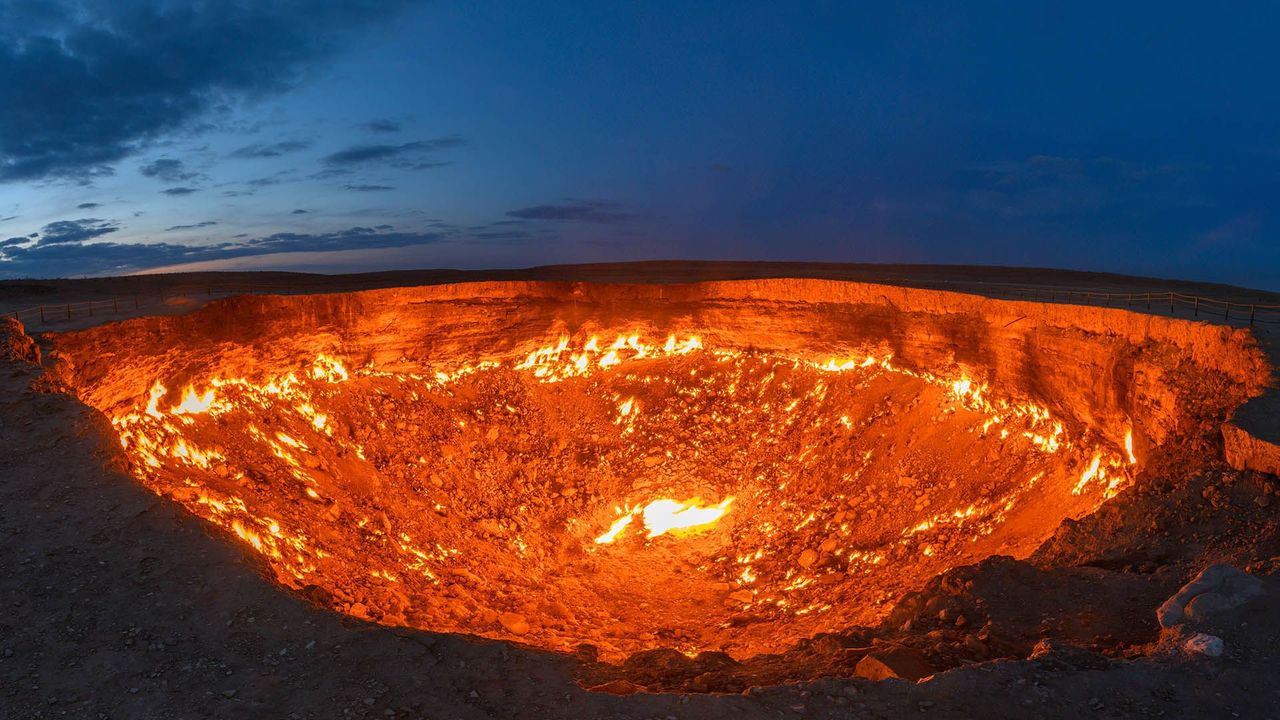 1. **The Door to Hell (Turkmenistan)** - A natural gas field in Derweze that has been burning continuously since 1971.The "Door to Hell" is a natural gas field located in Derweze, Turkmenistan. It is also known as the "Gates of Hell" or "Darvaza Gas Crater." The Door to Hell is not a natural geological feature but rather a man-made crater that has been burning continuously since 1971.
1. **The Door to Hell (Turkmenistan)** - A natural gas field in Derweze that has been burning continuously since 1971.The "Door to Hell" is a natural gas field located in Derweze, Turkmenistan. It is also known as the "Gates of Hell" or "Darvaza Gas Crater." The Door to Hell is not a natural geological feature but rather a man-made crater that has been burning continuously since 1971.### Origin of the Door to Hell:
1. **Drilling Accident**: The Door to Hell was created when a Soviet drilling rig accidentally punched into a massive underground natural gas cavern, causing the ground to collapse and the rig to fall into the crater.
2. **Gas Eruption**: Following the collapse, natural gas began leaking from the crater. To prevent the spread of the gas, it was decided to set it on fire, expecting the gas to burn out within a few weeks. However, the gas has been burning continuously ever since, creating the fiery crater known as the Door to Hell.
### Features of the Door to Hell:
1. **Size**: The crater has a diameter of about 70 meters (230 feet) and a depth of around 20 meters (66 feet).
2. **Flames**: The flames in the crater can reach heights of up to 30 meters (98 feet), and the glow of the fire can be seen from miles away, especially at night.
3. **Tourist Attraction**: Despite its remote location, the Door to Hell has become a popular tourist attraction, drawing visitors who are intrigued by its otherworldly appearance and the continuous burning flames.
4. **Scientific Interest**: The Door to Hell is also of interest to scientists studying natural gas emissions and the impact of methane on climate change. The crater emits a significant amount of methane, a potent greenhouse gas.
### Future of the Door to Hell:
1. **Closure**: There have been discussions about closing the Door to Hell by extinguishing the fire and capping the crater. However, as of now, the crater continues to burn.
2. **Tourism**: The Door to Hell remains a unique and popular tourist destination, attracting adventurous travelers from around the world.
Overall, the Door to Hell is a fascinating and unique phenomenon, serving as a reminder of the unintended consequences of industrial activities and a testament to the Earth's natural forces.
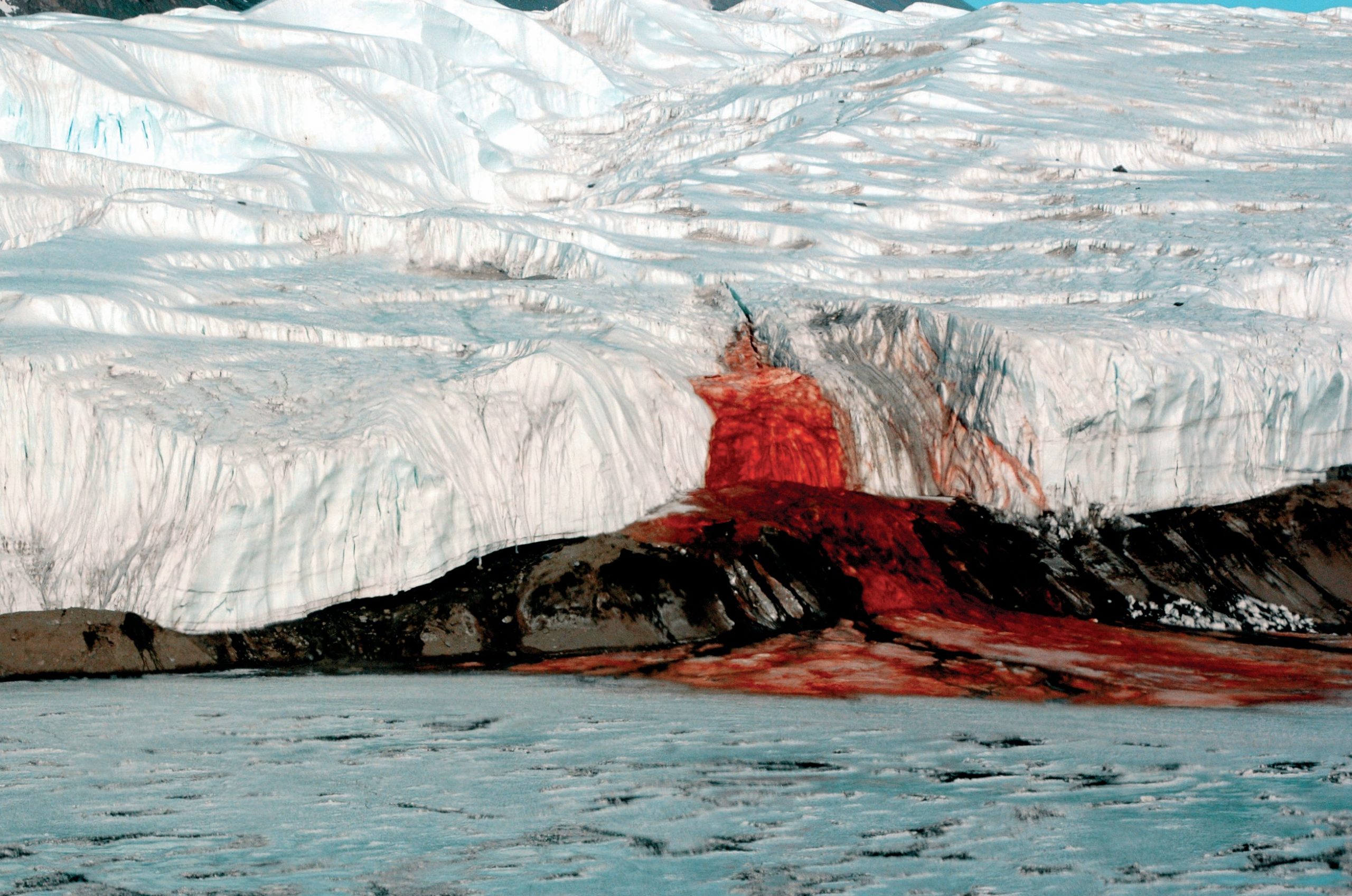 2. **Blood Falls (Antarctica)** - A red-colored waterfall flowing from the Taylor Glacier, caused by iron oxide in the water. Blood Falls is a natural phenomenon located in the McMurdo Dry Valleys of Antarctica. It is a bright red waterfall that flows from the tongue of the Taylor Glacier into Lake Bonney. The striking red color of the waterfall comes from iron oxide (rust) that is dissolved in the water.
2. **Blood Falls (Antarctica)** - A red-colored waterfall flowing from the Taylor Glacier, caused by iron oxide in the water. Blood Falls is a natural phenomenon located in the McMurdo Dry Valleys of Antarctica. It is a bright red waterfall that flows from the tongue of the Taylor Glacier into Lake Bonney. The striking red color of the waterfall comes from iron oxide (rust) that is dissolved in the water.### Key Features of Blood Falls:
1. **Origin of the Name**: Blood Falls gets its name from its vivid red color, which resembles blood. The color is due to the presence of iron oxide in the water.
2. **Source of Iron**: The iron in the water is believed to come from ancient seawater that was trapped beneath the glacier when it formed. The iron is released as the glacier melts and flows out of the glacier along with the water, giving the waterfall its red color.
3. **Discovery**: Blood Falls was first discovered in 1911 by Australian geologist Griffith Taylor. Its existence was initially a mystery, as the source of the red color was unknown at the time.
4. **Scientific Interest**: Blood Falls is of interest to scientists studying extremophiles, microorganisms that can survive in extreme environments. The water that emerges from the glacier is extremely salty and lacks oxygen, yet microorganisms have been found living in the water, feeding off the iron and sulfur compounds.
5. **Access**: Due to its remote location in Antarctica, Blood Falls is difficult to access. It is located in a region that is extremely cold and inhospitable, making it challenging for researchers to study.
6. **Tourism**: Despite its remote location, Blood Falls has become a tourist attraction, with visitors to Antarctica often making the journey to see the striking red waterfall.
Overall, Blood Falls is a fascinating natural phenomenon that continues to intrigue scientists and visitors alike. It serves as a reminder of the diverse and often surprising forms that life can take in even the most extreme environments.
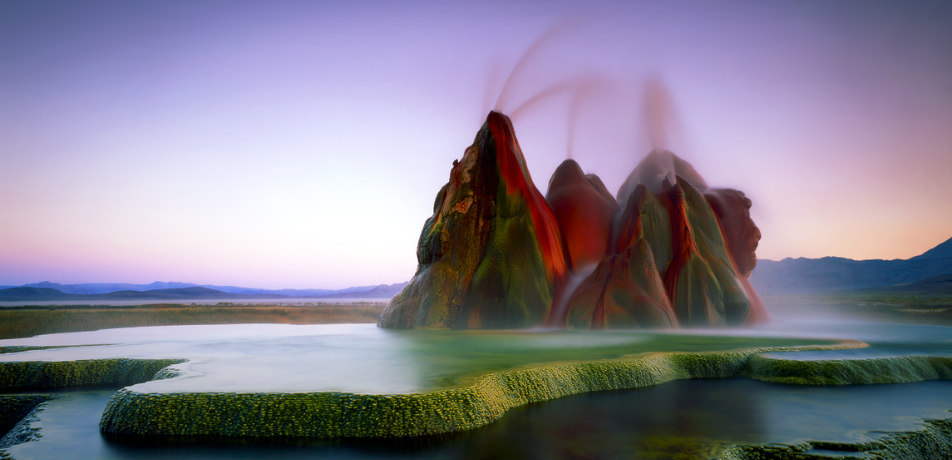 3. **Fly Geyser (Nevada, USA)** - A small geothermal geyser that was accidentally created by well drilling in 1964. Fly Geyser is a small geothermal geyser located in Washoe County, Nevada, USA. It is known for its striking appearance, with vibrant colors and unique formations created by mineral deposits. Here are some key features of Fly Geyser:
3. **Fly Geyser (Nevada, USA)** - A small geothermal geyser that was accidentally created by well drilling in 1964. Fly Geyser is a small geothermal geyser located in Washoe County, Nevada, USA. It is known for its striking appearance, with vibrant colors and unique formations created by mineral deposits. Here are some key features of Fly Geyser:### Origin of Fly Geyser:
1. **Accidental Creation**: Fly Geyser was accidentally created in 1916 during well drilling. The drilling was abandoned, and the well was not properly capped, allowing geothermally heated water to rise to the surface over the years, creating the geyser.
2. **Mineral Deposits**: Over time, mineral deposits from the geothermal water have built up around the geyser, creating the colorful terraces and cones that are visible today.
### Features of Fly Geyser:
1. **Size**: Fly Geyser reaches a height of about 5 feet (1.5 meters) tall, with the colorful terraces and cones extending several feet around the geyser.
2. **Colors**: The vibrant colors of Fly Geyser are due to thermophilic algae that thrive in the warm, mineral-rich waters. The algae create vivid red, green, and orange hues on the geyser's formations.
3. **Thermal Activity**: Fly Geyser is still active, continuously spouting water and steam, although the height of the eruptions is relatively low compared to other geysers.
4. **Private Property**: Fly Geyser is located on private land and is not open to the public. Access to the geyser is restricted, and visitors are not allowed without permission from the landowners.
### Conservation Efforts:
1. **Protection**: Efforts are being made to protect Fly Geyser and its surrounding environment. The landowners have taken steps to limit access to the geyser to prevent damage from vandalism and unauthorized visitors.
2. **Education**: Fly Geyser serves as an educational site for geology enthusiasts and researchers studying geothermal features. It provides insights into the geothermal activity and mineral formation processes.
Overall, Fly Geyser is a unique and beautiful natural feature that continues to fascinate visitors with its vibrant colors and unusual formations. Its accidental creation and ongoing evolution serve as a reminder of the dynamic forces at work in the Earth's geology.
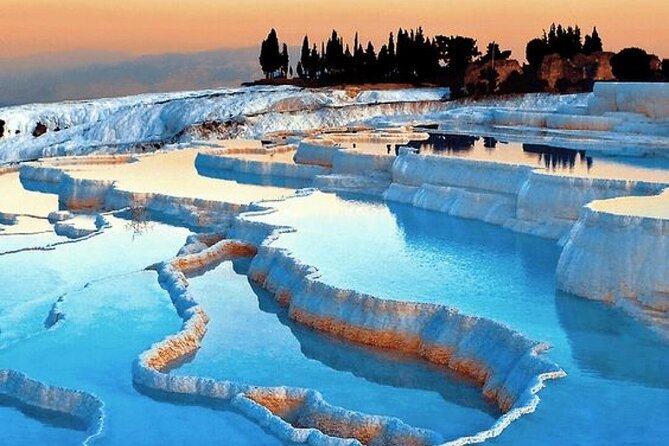 4. **Pamukkale (Turkey)** - Terraced hot springs with white travertine terraces formed by calcium deposits. Pamukkale, meaning "cotton castle" in Turkish, is a natural site in southwestern Turkey known for its mineral-rich thermal waters and white travertine terraces. Here are some key features of Pamukkale:
4. **Pamukkale (Turkey)** - Terraced hot springs with white travertine terraces formed by calcium deposits. Pamukkale, meaning "cotton castle" in Turkish, is a natural site in southwestern Turkey known for its mineral-rich thermal waters and white travertine terraces. Here are some key features of Pamukkale:### Formation of Pamukkale:
1. **Hot Springs**: The travertine terraces of Pamukkale were formed by the natural flow of mineral-rich thermal waters from hot springs over thousands of years.
2. **Calcium Carbonate Deposits**: As the hot spring water flows over the terraces, it cools and deposits calcium carbonate, which gradually builds up to form the distinctive white terraces.
### Features of Pamukkale:
1. **Travertine Terraces**: The terraces at Pamukkale resemble a series of white cascading pools, giving the appearance of a "cotton castle." Visitors are allowed to walk on the terraces and even soak in some of the pools.
2. **Hierapolis**: Pamukkale is also home to the ancient city of Hierapolis, which was founded as a thermal spa in the 2nd century BC. The ruins of Hierapolis include a well-preserved theater, necropolis, and Roman baths.
3. **Cleopatra's Pool**: Near the ancient city of Hierapolis is Cleopatra's Pool, a large thermal pool believed to have been used by Cleopatra herself. The pool is still open to visitors today.
### Conservation and Tourism:
1. **UNESCO World Heritage Site**: Pamukkale was declared a UNESCO World Heritage Site in 1988 in recognition of its natural and cultural significance.
2. **Tourism**: Pamukkale is a popular tourist destination, attracting visitors from around the world who come to see the natural beauty of the travertine terraces and explore the ancient ruins of Hierapolis.
3. **Conservation Efforts**: Due to the fragile nature of the travertine terraces, access to some areas of Pamukkale is restricted to protect the site from damage. Visitors are encouraged to follow designated paths and not to touch or disturb the travertine deposits.
Overall, Pamukkale is a unique and beautiful natural wonder that offers visitors a glimpse into Turkey's rich history and geology. Its stunning terraces and ancient ruins make it a must-visit destination for travelers in Turkey.
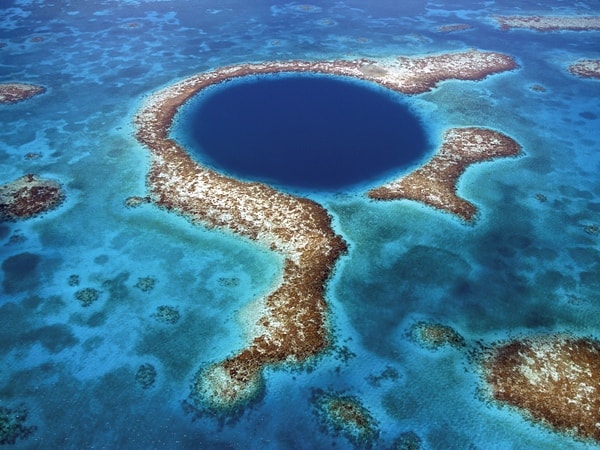 5. **The Blue Hole (Belize)** - A giant marine sinkhole that is a popular spot for divers. The Blue Hole is a famous underwater sinkhole located near the coast of Belize, in Central America. It is renowned for its deep blue color and its popularity among divers, especially for recreational scuba diving. Here are some key features of The Blue Hole:
5. **The Blue Hole (Belize)** - A giant marine sinkhole that is a popular spot for divers. The Blue Hole is a famous underwater sinkhole located near the coast of Belize, in Central America. It is renowned for its deep blue color and its popularity among divers, especially for recreational scuba diving. Here are some key features of The Blue Hole:### Formation of The Blue Hole:
1. **Geological Formation**: The Blue Hole is a large underwater sinkhole formed during the last Ice Age, when sea levels were much lower. It is believed to have been a limestone cave system that collapsed due to changes in sea level.
2. **Size and Depth**: The Blue Hole is roughly circular in shape, with a diameter of about 300 meters (984 feet) and a depth of more than 120 meters (394 feet). The depth of the hole is one of its most notable features, making it a challenging dive for even experienced divers.
### Features of The Blue Hole:
1. **Blue Color**: The Blue Hole gets its name from the deep blue color of its water, which is caused by the high clarity and purity of the water, as well as the depth of the hole itself.
2. **Marine Life**: While The Blue Hole itself is relatively devoid of marine life due to its depth and lack of sunlight, it is surrounded by a rich and diverse marine ecosystem, including coral reefs and a variety of fish species.
3. **Diving**: The Blue Hole is a popular destination for divers, who are attracted by the opportunity to explore its underwater depths and see its unique geological features. The hole is often the first dive in a series of dives along the Belize Barrier Reef, a UNESCO World Heritage Site.
### Conservation and Tourism:
1. **Conservation Efforts**: Due to its popularity among divers and tourists, The Blue Hole is subject to conservation efforts aimed at protecting its delicate ecosystem. Divers are encouraged to follow responsible diving practices and to avoid damaging the coral reefs.
2. **Tourism**: The Blue Hole is a major tourist attraction in Belize, drawing visitors from around the world who come to dive, snorkel, and explore the natural beauty of the area.
Overall, The Blue Hole is a spectacular natural wonder that offers a unique and unforgettable diving experience for those adventurous enough to explore its depths.
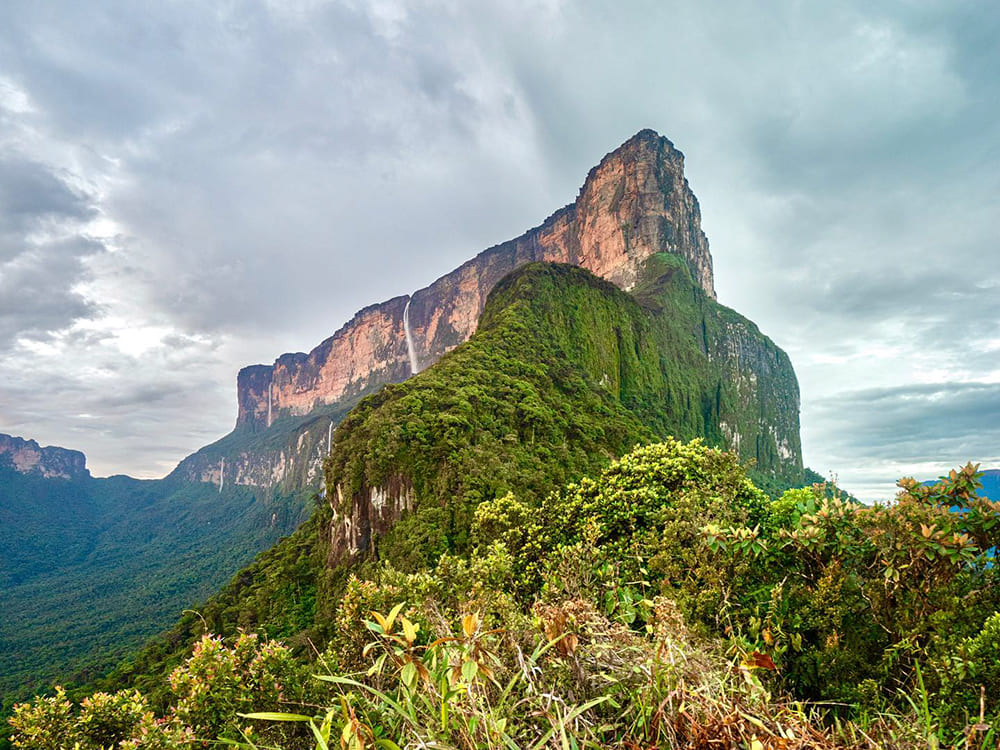
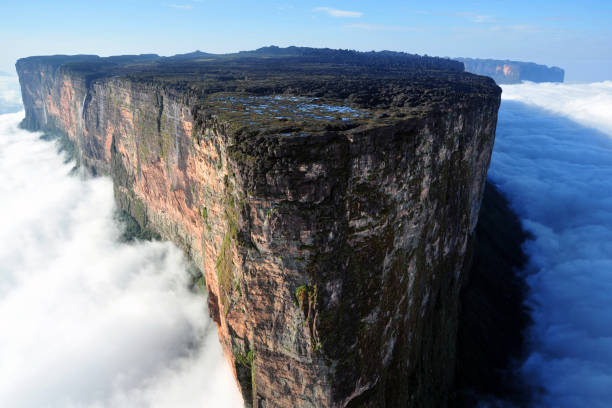 6. **Mount Roraima (Venezuela/Brazil/Guyana)** - A flat-topped mountain with unique ecosystems and landscapes.Mount Roraima is a stunning tabletop mountain located at the triple border point between Venezuela, Brazil, and Guyana in South America. It is part of the Pakaraima mountain chain in the Guiana Highlands and is considered one of the oldest geological formations on Earth. Here are some key features of Mount Roraima:
6. **Mount Roraima (Venezuela/Brazil/Guyana)** - A flat-topped mountain with unique ecosystems and landscapes.Mount Roraima is a stunning tabletop mountain located at the triple border point between Venezuela, Brazil, and Guyana in South America. It is part of the Pakaraima mountain chain in the Guiana Highlands and is considered one of the oldest geological formations on Earth. Here are some key features of Mount Roraima:### Geological Formation:
1. **Tabletop Shape**: Mount Roraima is famous for its flat, tabletop summit, which rises to an elevation of about 2,810 meters (9,219 feet) above sea level. The summit area is estimated to be around 31 square kilometers (12 square miles) in size.
2. **Ancient Formation**: Mount Roraima is believed to have formed around two billion years ago, making it one of the oldest geological formations on the planet. Its unique shape and geological features have attracted scientists and explorers for centuries.
### Natural Features:
1. **Flora and Fauna**: The summit of Mount Roraima is home to unique plant and animal species that are found nowhere else on Earth. The area is known for its diverse flora, including carnivorous plants, orchids, and unique mosses.
2. **Waterfalls**: The sheer cliffs of Mount Roraima are dotted with numerous waterfalls, some of which are among the tallest in the world. These waterfalls add to the dramatic beauty of the mountain and are a popular attraction for visitors.
### Cultural and Historical Significance:
1. **Indigenous Peoples**: Mount Roraima is considered sacred by the indigenous Pemon people, who live in the region. They believe that the mountain is the stump of a mighty tree that once held all the fruits and tuberous vegetables in the world.
2. **Literary Inspiration**: Mount Roraima has inspired numerous works of fiction, including Sir Arthur Conan Doyle's novel "The Lost World," which features an isolated plateau inhabited by prehistoric creatures.
### Tourism and Access:
1. **Trekking**: Trekking to the summit of Mount Roraima is a popular activity for adventurous travelers. The trek typically takes several days and requires a guide due to the challenging terrain and weather conditions.
2. **Access**: The most common starting point for treks to Mount Roraima is the town of Santa Elena de Uairén in Venezuela. From there, visitors must travel by foot or by helicopter to reach the mountain.
Overall, Mount Roraima is a spectacular natural wonder with a rich geological history and cultural significance. Its unique shape and diverse ecosystems make it a must-visit destination for nature lovers and adventurers alike.
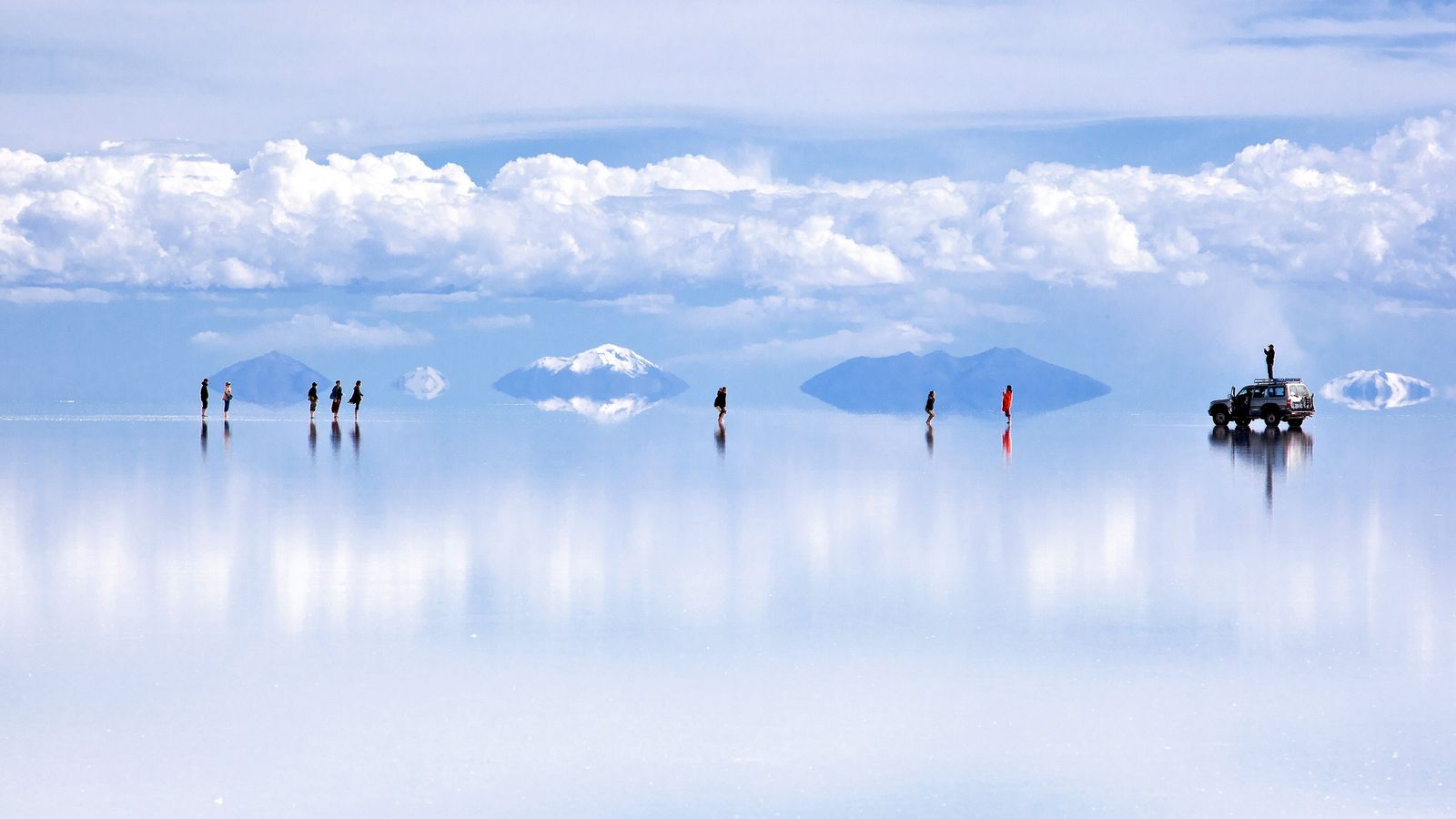 7. **Salar de Uyuni (Bolivia)** - The world's largest salt flat, which creates an incredible reflective surface when wet.Salar de Uyuni is the world's largest salt flat, located in southwest Bolivia near the crest of the Andes Mountains. Here are some key features of Salar de Uyuni:
7. **Salar de Uyuni (Bolivia)** - The world's largest salt flat, which creates an incredible reflective surface when wet.Salar de Uyuni is the world's largest salt flat, located in southwest Bolivia near the crest of the Andes Mountains. Here are some key features of Salar de Uyuni:### Formation and Geography:
1. **Origin**: Salar de Uyuni was formed as a result of prehistoric lakes that dried up, leaving behind a vast salt flat. It is estimated to contain about 10 billion tons of salt.
2. **Size**: Covering an area of over 10,000 square kilometers (3,900 square miles), Salar de Uyuni is the largest salt flat in the world. It is so large and flat that it is used to calibrate satellites.
3. **Landscape**: The salt flat is almost perfectly flat, with an average elevation of about 3,656 meters (11,995 feet) above sea level. During the rainy season, a thin layer of water covers the salt flat, creating a stunning mirror effect that reflects the sky.
### Unique Features:
1. **Isla Incahuasi**: Located near the center of Salar de Uyuni, Isla Incahuasi is a rocky outcrop covered in giant cacti. It provides panoramic views of the salt flat and is a popular stop for tourists.
2. **Train Cemetery**: Near the town of Uyuni, there is a train cemetery where old, rusting locomotives and train cars are left abandoned. It is a popular spot for photographers and tourists.
3. **Flora and Fauna**: Despite its harsh environment, Salar de Uyuni is home to several species of flamingos and other birds that feed on the algae and plankton in the saline waters.
### Tourism and Access:
1. **Tourism**: Salar de Uyuni is a popular tourist destination, known for its otherworldly landscapes and unique photo opportunities. Tourists can visit the salt flat on guided tours that typically include visits to Isla Incahuasi, the train cemetery, and nearby hot springs.
2. **Access**: The town of Uyuni serves as the gateway to the salt flat, with many tour operators offering guided tours. The nearest major airport is in the city of Oruro, from where visitors can take a bus or train to Uyuni.
### Conservation:
1. **Environmental Concerns**: Due to its popularity among tourists, there are concerns about the impact of tourism on the fragile ecosystem of Salar de Uyuni. Efforts are being made to promote sustainable tourism practices and protect the salt flat's unique environment.
Overall, Salar de Uyuni is a breathtaking natural wonder with a unique landscape and fascinating geology. Its vast expanse of salt and stunning mirror effect make it a must-visit destination for travelers in Bolivia
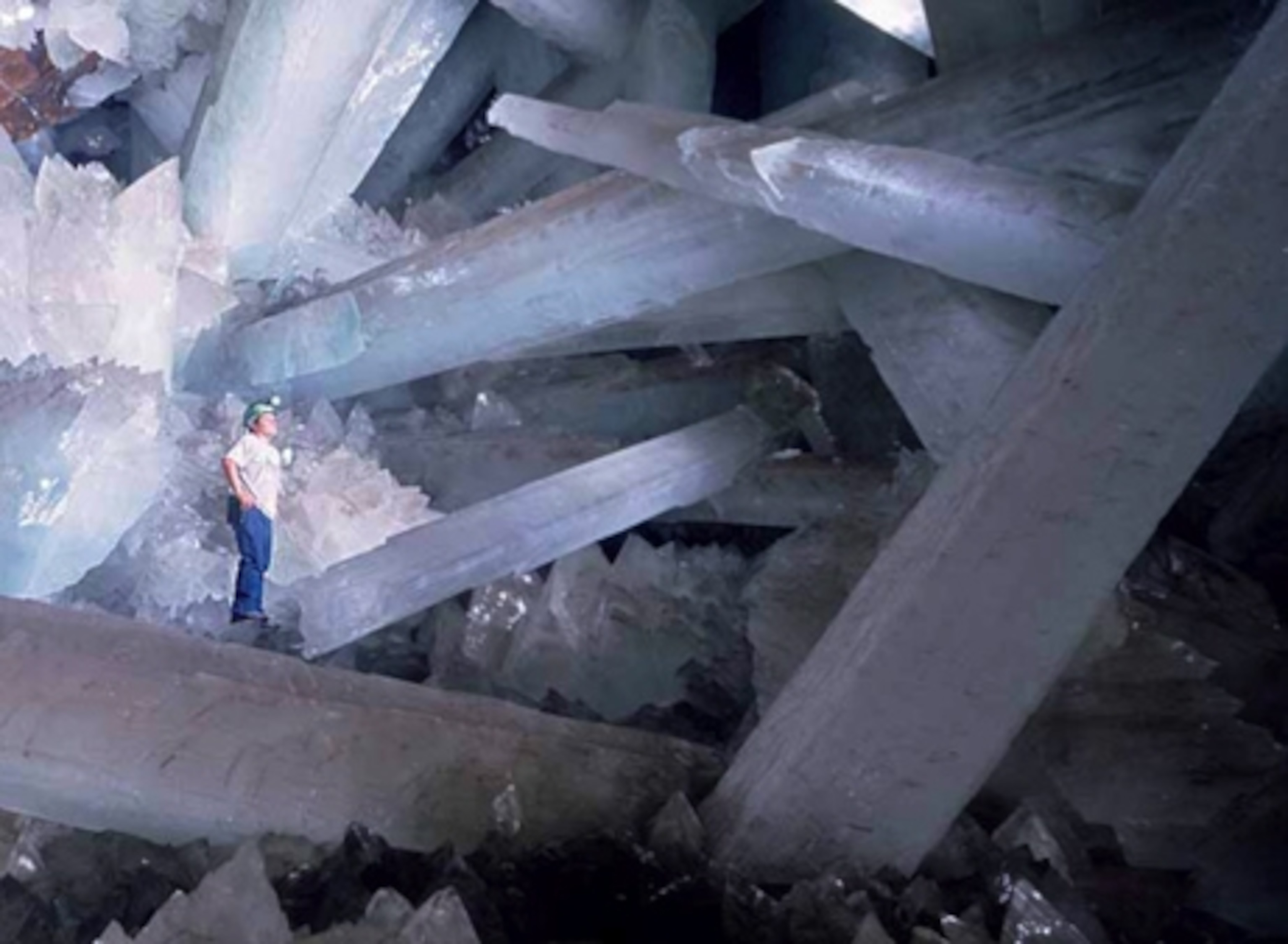
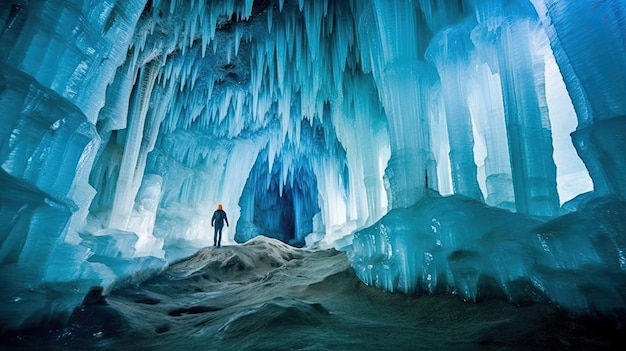 8. **Cave of Crystals (Mexico)** - A cave with some of the largest natural crystals ever found.The Cave of Crystals (Cueva de los Cristales) is a remarkable cave connected to the Naica Mine in Chihuahua, Mexico. It is famous for its enormous gypsum crystals, some of the largest ever found on Earth. Here are some key features of the Cave of Crystals:
8. **Cave of Crystals (Mexico)** - A cave with some of the largest natural crystals ever found.The Cave of Crystals (Cueva de los Cristales) is a remarkable cave connected to the Naica Mine in Chihuahua, Mexico. It is famous for its enormous gypsum crystals, some of the largest ever found on Earth. Here are some key features of the Cave of Crystals:### Formation of the Crystals:
1. **Geological Formation**: The crystals in the cave were formed over thousands of years by hydrothermal fluids rich in minerals that seeped into the limestone caverns.
2. **Gypsum Crystals**: The crystals in the cave are made of gypsum, a soft sulfate mineral that is commonly used in construction. The crystals can grow to enormous sizes, with some reaching lengths of up to 12 meters (39 feet) and weights of up to 55 tons.
### Features of the Cave:
1. **Size**: The Cave of Crystals is approximately 300 meters (1,000 feet) below the surface and is connected to the larger Naica Mine complex. The cave itself is relatively small, with an area of about 10 by 30 meters (33 by 98 feet).
2. **Conditions**: The cave has extremely high temperatures, with temperatures reaching up to 58°C (136°F) and humidity levels of over 90%. These conditions make it difficult for humans to enter the cave without special equipment.
### Discovery and Exploration:
1. **Discovery**: The Cave of Crystals was discovered in 2000 by miners working in the Naica Mine. The discovery was made while drilling a new tunnel in the mine.
2. **Exploration**: Due to the extreme conditions inside the cave, including high temperatures and humidity levels, exploration of the Cave of Crystals has been limited. Scientists and researchers have used special suits and equipment to study the crystals and the cave's environment.
### Conservation and Preservation:
1. **Threats**: The crystals in the Cave of Crystals are extremely fragile and can be damaged by changes in temperature, humidity, and human activity. There are concerns about the long-term preservation of the crystals, especially as mining activities continue in the area.
2. **Research**: Scientists are studying the crystals in the Cave of Crystals to learn more about the formation of crystals and the conditions that exist deep within the Earth's crust.
Overall, the Cave of Crystals is a fascinating and unique geological wonder that offers valuable insights into the processes that shape the Earth's crust. Efforts to preserve and protect this natural treasure are essential to ensure that future generations can continue to marvel at its beauty.
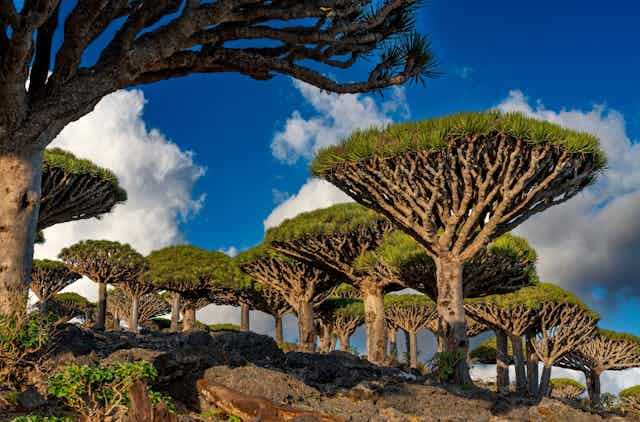
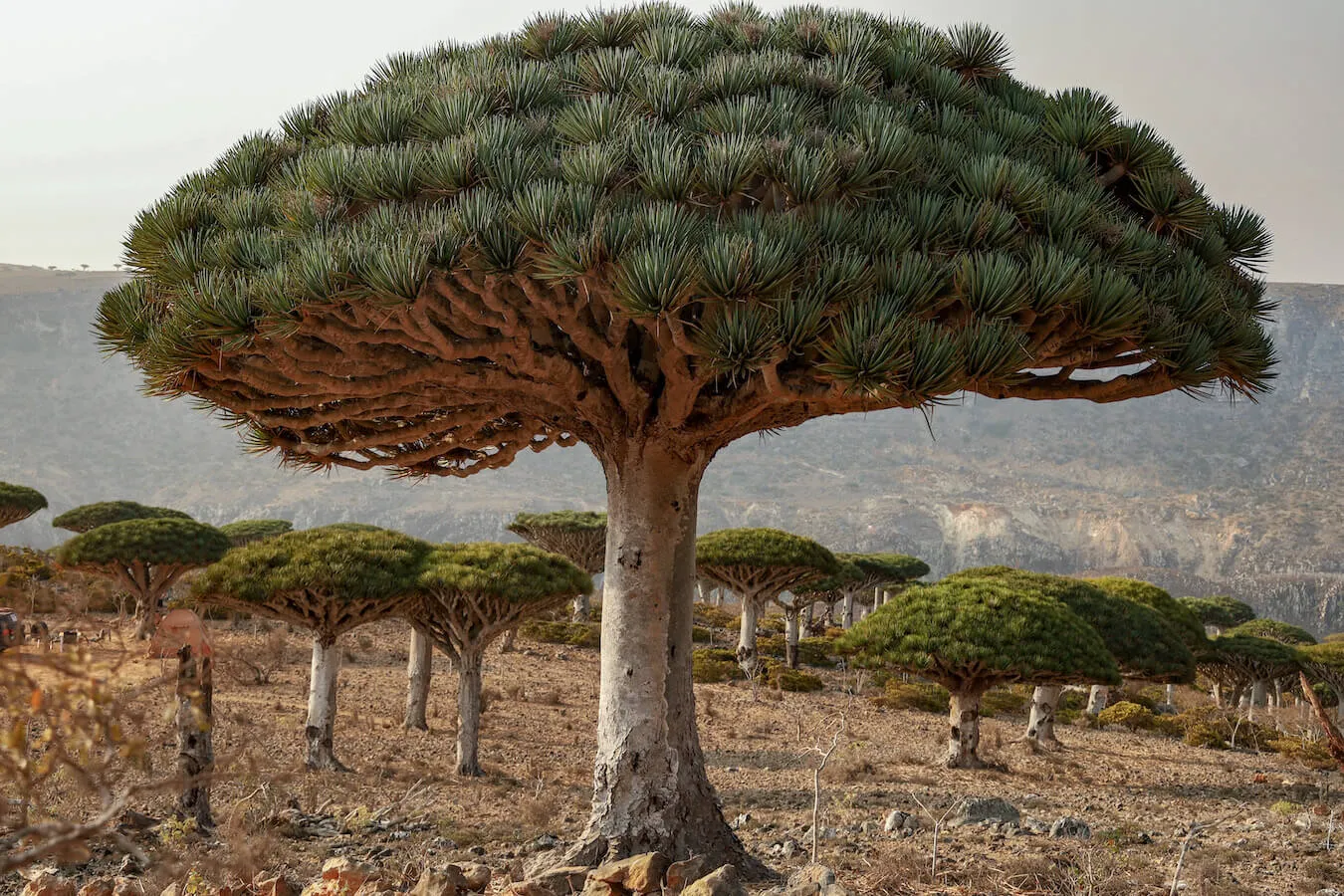 9. **Socotra Island (Yemen)** - Home to unique flora and fauna, including the dragon's blood tree.Socotra Island, part of the Socotra Archipelago in the Arabian Sea, is a unique and biodiverse island that is known for its distinct flora, fauna, and landscapes. Here are some key features of Socotra Island:
9. **Socotra Island (Yemen)** - Home to unique flora and fauna, including the dragon's blood tree.Socotra Island, part of the Socotra Archipelago in the Arabian Sea, is a unique and biodiverse island that is known for its distinct flora, fauna, and landscapes. Here are some key features of Socotra Island:### Biodiversity:
1. **Unique Flora**: Socotra Island is home to a high number of endemic plant species, meaning they are found nowhere else on Earth. The island's most famous plant is the Dragon's Blood Tree, known for its unique shape and red sap.
2. **Rich Fauna**: The island is also home to unique animal species, including several species of birds, reptiles, and insects that are found only on Socotra.
### Geography and Landscapes:
1. **Limestone Plateaus**: The island features dramatic limestone plateaus and cliffs that rise steeply from the sea, creating stunning coastal landscapes.
2. **Sand Dunes**: Socotra is also home to expansive sand dunes, particularly in the central part of the island.
### Cultural Significance:
1. **Cultural Heritage**: Socotra has a rich cultural heritage, with a history that dates back thousands of years. The island has been influenced by various civilizations, including the Greeks, Romans, and Arabs.
2. **UNESCO World Heritage Site**: The entire Socotra Archipelago was designated a UNESCO World Heritage Site in 2008 in recognition of its outstanding natural and cultural significance.
### Conservation and Preservation:
1. **Environmental Threats**: Socotra Island faces threats from climate change, habitat destruction, and invasive species, which could impact its unique biodiversity.
2. **Conservation Efforts**: Efforts are underway to protect and preserve Socotra's unique flora and fauna. Conservation organizations are working with local communities to promote sustainable practices and protect the island's natural heritage.
Overall, Socotra Island is a remarkable and unique destination that offers visitors a glimpse into a truly distinct ecosystem and culture. Its stunning landscapes, unique flora and fauna, and rich cultural heritage make it a treasure worth preserving for future generations.
.jpg?alt=media&token=5bb8a699-1a8e-454a-bd5b-8906cea511b9) 10. **Waitomo Glowworm Caves (New Zealand)** - Caves illuminated by bioluminescent glowworms.The Waitomo Glowworm Caves are a renowned tourist attraction located in the North Island of New Zealand. The caves are known for their unique population of glowworms (Arachnocampa luminosa), which create a spectacular bioluminescent display. Here are some key features of the Waitomo Glowworm Caves:
10. **Waitomo Glowworm Caves (New Zealand)** - Caves illuminated by bioluminescent glowworms.The Waitomo Glowworm Caves are a renowned tourist attraction located in the North Island of New Zealand. The caves are known for their unique population of glowworms (Arachnocampa luminosa), which create a spectacular bioluminescent display. Here are some key features of the Waitomo Glowworm Caves:### Glowworms:
1. **Species**: The glowworms found in the Waitomo Caves are a species of fungus gnat endemic to New Zealand, known scientifically as Arachnocampa luminosa. They are not actually worms, but the larvae of the fungus gnat.
2. **Bioluminescence**: The glowworms produce a blue-green light through a chemical reaction to attract prey. The light is emitted from their tails, which hang down like silk threads.
### Cave Features:
1. **Limestone Formations**: The Waitomo Caves feature stunning limestone formations, including stalactites, stalagmites, and columns, formed over millions of years by the action of water dissolving calcium carbonate.
2. **Boat Tours**: Visitors to the Waitomo Glowworm Caves can take guided boat tours through the caves, where they can marvel at the glowworms illuminating the cave ceilings.
### Cultural Significance:
1. **Maori History**: The Waitomo Caves hold cultural significance for the Maori people, who have ancestral connections to the caves and the surrounding area.
2. **Tourism**: The Waitomo Glowworm Caves are a popular tourist destination, attracting visitors from around the world who come to witness the mesmerizing glowworm displays.
### Conservation:
1. **Protection**: Efforts are made to protect the glowworms and their habitat. Visitors are guided through the caves on designated paths to minimize impact on the fragile ecosystem.
2. **Education**: The caves are used for educational purposes, allowing visitors to learn about the unique ecology of glowworms and the importance of cave conservation.
Overall, the Waitomo Glowworm Caves are a natural wonder that offers a glimpse into the fascinating world of bioluminescence. The caves' beauty and cultural significance make them a must-visit destination for anyone traveling to New Zealand.
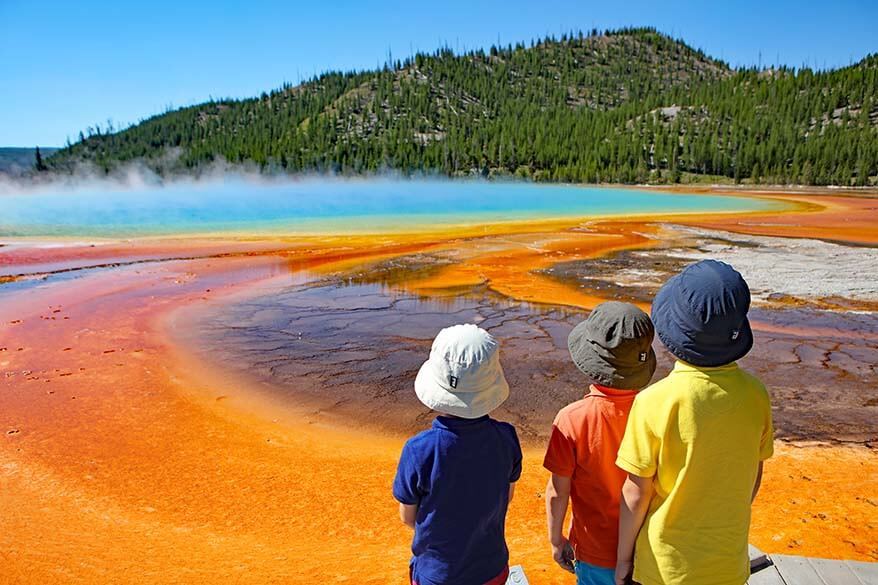 11. **Grand Prismatic Spring (Wyoming,The Grand Prismatic Spring is a large and stunning hot spring located in Yellowstone National Park, Wyoming, USA. It is known for its vibrant colors, created by thermophilic (heat-loving) bacteria and algae that thrive in the hot, mineral-rich waters. Here are some key features of the Grand Prismatic Spring:
11. **Grand Prismatic Spring (Wyoming,The Grand Prismatic Spring is a large and stunning hot spring located in Yellowstone National Park, Wyoming, USA. It is known for its vibrant colors, created by thermophilic (heat-loving) bacteria and algae that thrive in the hot, mineral-rich waters. Here are some key features of the Grand Prismatic Spring:### Size and Depth:
1. **Size**: The Grand Prismatic Spring is the largest hot spring in the United States and the third-largest in the world. It measures approximately 250 by 300 feet (76 by 91 meters) in size.
2. **Depth**: The depth of the Grand Prismatic Spring is estimated to be around 160 feet (49 meters) deep, though the actual depth is difficult to measure due to its constantly changing nature.
### Colors:
1. **Colorful Microorganisms**: The vibrant colors of the Grand Prismatic Spring are created by the presence of thermophilic bacteria and algae. These microorganisms produce pigments that give the water its brilliant hues of blue, green, yellow, orange, and red.
2. **Temperature Gradient**: The colors of the spring vary depending on the temperature of the water. The center of the pool is the hottest, with temperatures approaching boiling, while the cooler outer edges support different types of microorganisms, each contributing to the array of colors.
### Viewing:
1. **Boardwalk**: Visitors to Yellowstone National Park can view the Grand Prismatic Spring from an elevated boardwalk that offers panoramic views of the spring and its surrounding area.
2. **Fairy Falls Trail**: For a closer view of the spring, visitors can hike the Fairy Falls Trail, which provides a ground-level perspective of the spring's vibrant colors.
### Conservation and Protection:
1. **Environmental Protection**: The Grand Prismatic Spring, like other geothermal features in Yellowstone National Park, is protected by law to preserve its natural beauty and delicate ecosystem.
2. **Visitor Education**: Educational programs and materials are available to help visitors understand the unique geology and ecology of the Grand Prismatic Spring and Yellowstone National Park as a whole.
Overall, the Grand Prismatic Spring is a breathtaking natural wonder that showcases the beauty and diversity of Yellowstone National Park's geothermal features. Its vibrant colors and unique ecosystem make it a must-see destination for visitors to the park. USA)** - The largest hot spring in the USA, known for its vibrant colors.
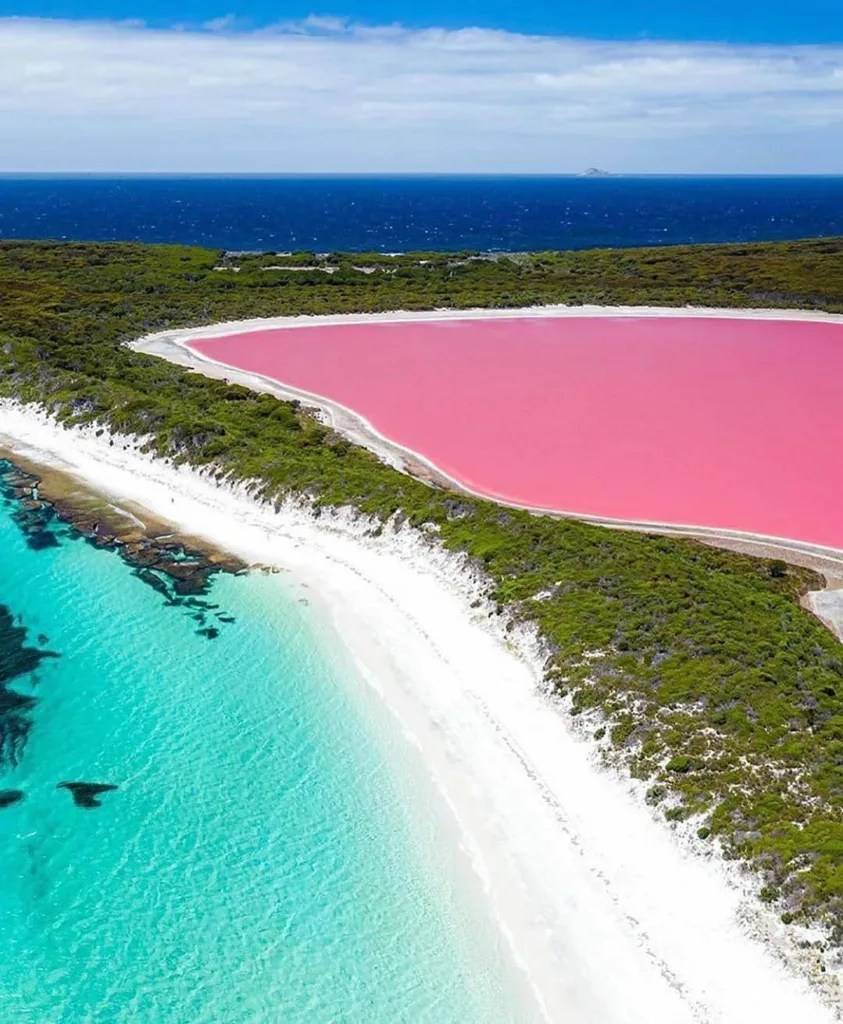 12. **Lake Hillier (Australia)** - A bright pink lake caused by the presence of algae and bacteria.There are several lakes around the world that are known for their pink color, which is often caused by a combination of factors such as algae, bacteria, and high salinity. Here are a few notable pink lakes:
12. **Lake Hillier (Australia)** - A bright pink lake caused by the presence of algae and bacteria.There are several lakes around the world that are known for their pink color, which is often caused by a combination of factors such as algae, bacteria, and high salinity. Here are a few notable pink lakes:### Lake Hillier, Australia:
- **Location**: Located on Middle Island in Western Australia.
- **Cause**: The pink color is due to the presence of a type of algae called Dunaliella salina and pink bacteria known as halobacteria.
- **Features**: The lake retains its pink color even when bottled due to the high salinity levels.
### Lake Retba, Senegal:
- **Location**: Located near the Cap Vert peninsula of Senegal.
- **Cause**: The pink color is due to the presence of Dunaliella salina algae and high salt content.
- **Features**: The color is most vibrant during the dry season when the salt content is at its highest.
### Masazir Lake, Azerbaijan:
- **Location**: Located near Baku, the capital of Azerbaijan.
- **Cause**: The pink color is due to the presence of a type of algae called Spirulina platensis.
- **Features**: The lake is also known for its therapeutic mud, which is believed to have healing properties.
### Hutt Lagoon, Australia:
- **Location**: Located near Port Gregory in Western Australia.
- **Cause**: The pink color is due to the presence of beta-carotene-producing algae Dunaliella salina.
- **Features**: The lake's color can vary from light pink to a deep magenta depending on the time of day and season.
These pink lakes are not only visually stunning but also serve as important ecosystems, supporting unique forms of life adapted to their extreme conditions.
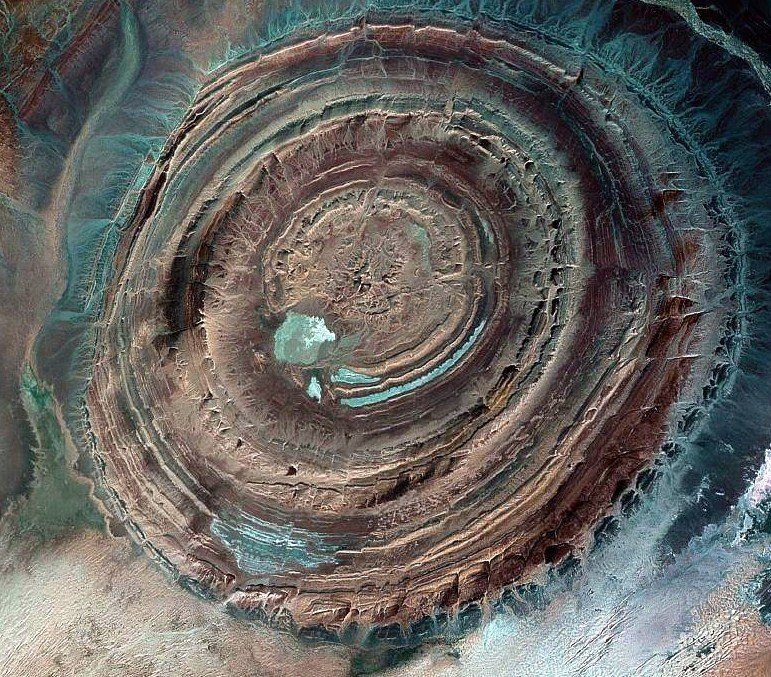 13. **The Eye of the Sahara (Mauritania)** - A circular geological formation that resembles an eye.The Eye of the Sahara, also known as the Richat Structure, is a prominent geological formation located in the Sahara Desert in Mauritania, West Africa. Here are some key features of the Eye of the Sahara:
13. **The Eye of the Sahara (Mauritania)** - A circular geological formation that resembles an eye.The Eye of the Sahara, also known as the Richat Structure, is a prominent geological formation located in the Sahara Desert in Mauritania, West Africa. Here are some key features of the Eye of the Sahara:### Geological Formation:
1. **Origin**: The Eye of the Sahara is a deeply eroded, dome-shaped rock structure that is believed to have been formed by the uplift of rock layers and subsequent erosion over millions of years.
2. **Size**: The structure is massive, with a diameter of approximately 40 kilometers (25 miles). It is easily visible from space and has been used by astronauts as a landmark.
### Appearance and Features:
1. **Bull's Eye Pattern**: The structure is characterized by a series of concentric rings that resemble a bull's eye when viewed from above. These rings are believed to be the result of different rock layers that have been exposed through erosion.
2. **Geological Layers**: The Eye of the Sahara is composed of various types of rock, including sedimentary and igneous rocks, which provide valuable insights into the geological history of the region.
### Scientific Interest:
1. **Formation**: The exact formation process of the Eye of the Sahara is still debated among scientists. Some theories suggest it was created by a volcanic eruption or the impact of a meteorite, while others argue it is a result of natural geological processes.
2. **Research and Exploration**: The Eye of the Sahara is of interest to geologists and researchers studying the Earth's geological history. It provides a unique opportunity to study the processes of erosion and tectonic activity over millions of years.
### Cultural Significance:
1. **Local Traditions**: The Eye of the Sahara is considered a sacred place by the local Bedouin tribes, who have various myths and legends associated with its formation.
2. **Tourism**: The Eye of the Sahara has become a popular tourist destination, with visitors coming to marvel at its unique geological features and stunning desert landscapes.
Overall, the Eye of the Sahara is a fascinating geological formation that offers valuable insights into the Earth's geological history and provides a stunning example of the power of natural erosion and geological processes.
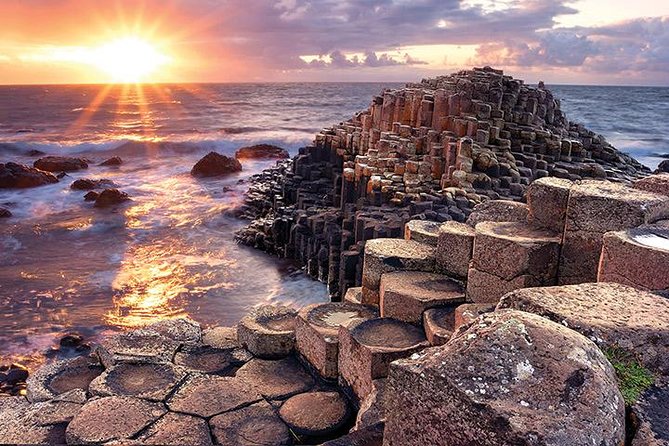 14. **Giant's Causeway (Northern Ireland)** - An area with about 40,000 interlocking basalt columns, formed by volcanic activity.The Giant's Causeway is a unique geological formation located on the northeast coast of Northern Ireland. It is renowned for its hexagonal basalt columns, which form a series of stepping stones leading from the cliffs into the sea. Here are some key features of the Giant's Causeway:
14. **Giant's Causeway (Northern Ireland)** - An area with about 40,000 interlocking basalt columns, formed by volcanic activity.The Giant's Causeway is a unique geological formation located on the northeast coast of Northern Ireland. It is renowned for its hexagonal basalt columns, which form a series of stepping stones leading from the cliffs into the sea. Here are some key features of the Giant's Causeway:### Geological Formation:
1. **Basalt Columns**: The most distinctive feature of the Giant's Causeway is its hexagonal basalt columns, which were formed by volcanic activity around 50-60 million years ago. As the lava cooled rapidly, it contracted and cracked, forming the characteristic columns.
2. **Giant's Organ**: One of the formations at the Giant's Causeway is known as the Giant's Organ, due to its resemblance to a giant-sized musical instrument. This formation consists of a series of vertical columns that resemble organ pipes.
### Legend of Finn McCool:
1. **Mythical Origins**: According to Irish mythology, the Giant's Causeway was created by the giant Finn McCool, who built the causeway across the North Channel to Scotland so he could challenge the Scottish giant Benandonner to a fight.
2. **Folklore**: The legend of Finn McCool and the Giant's Causeway is a popular story in Irish folklore and has been passed down through generations.
### UNESCO World Heritage Site:
1. **Recognition**: The Giant's Causeway was designated a UNESCO World Heritage Site in 1986, in recognition of its outstanding geological significance and natural beauty.
2. **Conservation**: Efforts are made to preserve and protect the Giant's Causeway, including visitor management and conservation programs to prevent damage to the site.
### Tourism:
1. **Visitor Center**: The Giant's Causeway Visitor Center offers information about the formation of the causeway, the local wildlife, and the history and folklore associated with the site.
2. **Walking Trails**: Visitors can explore the Giant's Causeway along a series of walking trails that lead through the columns and along the cliffs, offering stunning views of the coastline.
Overall, the Giant's Causeway is a remarkable natural wonder that attracts visitors from around the world with its unique geological formations and fascinating folklore. Its striking beauty and geological significance make it a must-visit destination for anyone traveling to Northern Ireland.
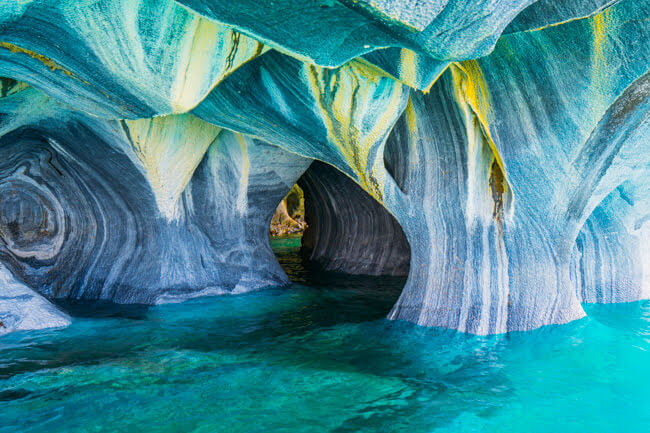 15. **Marble Caves (Chile)** - Caves with stunning blue and white marble formations, created by water erosion.The Marble Caves (Cuevas de Mármol) are a series of stunning natural caves located in the General Carrera Lake in Patagonia, Chile. These caves are known for their unique marble formations and the beautiful reflections of the turquoise waters of the lake. Here are some key features of the Marble Caves:
15. **Marble Caves (Chile)** - Caves with stunning blue and white marble formations, created by water erosion.The Marble Caves (Cuevas de Mármol) are a series of stunning natural caves located in the General Carrera Lake in Patagonia, Chile. These caves are known for their unique marble formations and the beautiful reflections of the turquoise waters of the lake. Here are some key features of the Marble Caves:### Geological Formation:
1. **Marble Formations**: The Marble Caves are made of marble, a metamorphic rock, which has been eroded over thousands of years by the water of General Carrera Lake, creating intricate patterns and formations.
2. **Colorful Reflections**: The turquoise color of the lake water, caused by rock flour suspended in the water, creates a stunning contrast with the white and gray marble, resulting in vibrant and ever-changing reflections.
### Access:
1. **Boat Tours**: The Marble Caves can be visited by boat, which allows visitors to navigate through the caves and appreciate their beauty up close.
2. **Location**: The Marble Caves are located in a remote area of Patagonia, and access can be challenging. The nearest town is Puerto Rio Tranquilo, from where boat tours to the caves are organized.
### Conservation and Protection:
1. **Natural Reserve**: The Marble Caves are part of the General Carrera Lake National Reserve, which aims to protect the natural beauty and biodiversity of the area.
2. **Sustainable Tourism**: Efforts are made to promote sustainable tourism practices in the area to minimize the impact on the fragile marble formations and the surrounding environment.
### Photography and Tourism:
1. **Photographic Opportunities**: The Marble Caves are a popular destination for photographers due to their unique beauty and the stunning reflections created by the lake water.
2. **Tourist Attractions**: The Marble Caves are one of the main tourist attractions in Patagonia, attracting visitors from around the world who come to admire their natural beauty.
Overall, the Marble Caves are a natural wonder of Patagonia, Chile, known for their unique marble formations and stunning reflections. They are a must-visit destination for anyone traveling to the region.
Each of these places offers unique and remarkable natural phenomena that are scientifically intriguing.




